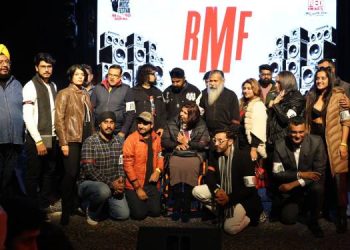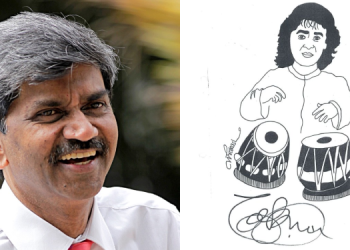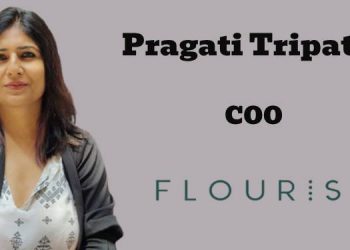Five focus points of 2021 for the FMCG sector
Krishnarao Buddha, Sr. Category Head at Parle Products
In the history of the FMCG industry, 2020 will be remembered always because of our economy and businesses that witnessed some turbulence and unexpected changes. Due to the current situation, marketing teams have changed their communication strategies with consumers. In 2021, marketers should be adaptable to changes and have the ability to overcome crises with robust strategies based on the changing trends and consumer behaviour. FMCG will be a key component of economic revival as it will be focused on possibilities and resilience to undertake responsibility for revival of brands.
Here are some of the focus points of 2021:
Digital media and adopting 5G a priority
We have been hearing about the benefits of 5G for years now, but it wasn’t until remote work, video conferencing and digital collaboration that it became a part of our lives this year. The need for reliable connectivity and more bandwidth became a concrete benefit for all. There will be a significant rise in spends fuelled by the likely introduction of 5G services in India later in 2021. The advent of 4G and low cost barrier of smartphones has given rise to digital transformation leading to seamless streaming and networking. This will attract great investments with 5G over the next 3 years and 5G will be leading the change as far as overall media marketing and consumption is concerned. Marketers have re-strategized their plans and are thinking creatively to use social media and digital platforms to attain consumer loyalty towards brands.
The new business models and frameworks will include augmented reality, focus on innovation and sustainability strategies. For example, Instagram AR was a huge success to drive brand purpose in 2020. Digital analysis based marketing approach will lead to building authenticity and credibility in the way we engage, whether it is through products, people or partnerships.
Rise in OTT consumption and influencer marketing
For the OTT industry, the year 2020 was full of celebrations as consumers in both rural and metro-cities scouted for stay-at-home entertainment options. This year, OTT giants are expected to up their original content investment while also churning out fresh content in regional languages to reach the masses and satiate the viewer’s appetite for variety content as OTT is no longer a metro phenomenon. These platforms are helping brands create a smooth bridge between advertisers and viewers as the trend of brand storytelling incorporates products and brand narratives on home-grown streaming platforms.
Simultaneously, while many Indians spent most of their time-consuming content online, it has triggered a fundamental shift in the influencer marketing space with big brands deepening their engagement with various influencers as consumers turned to Youtube videos and Instagram reels. This increased dependency on influencer marketing has become a go-to strategy for many brands. With influencers becoming the opinion makers who can slip a brand into a consumer’s consideration set, influencer marketing is gradually increasing its share in a company’s digital ad spends.
Remarkable shift to rural with a higher demand for LUP
Non-metro markets are driving the viewership of advertisement on television and digital media as consumption in smaller and rural markets continue to grow faster compared to urban India. Hence, FMCG companies are now increasing their focus on rural markets which is close to 40 percent of industry sales and have the least impact of the pandemic. Strong engagement will be driven by leveraging local insights and customized strategies to reach out to new-age consumers in regional markets. Personalization is going to be a key driver for brands.
Small packs also known as LUP (low-unit packs), have a big market not only in cities but also in rural areas where a majority of consumers face financial constraints and demand value for money. The recovery of the economy will generate higher demand among consumers towards LUP. Companies will expand their product basket in the rural market by way of newer affordable packs across categories to feed these markets and push demand growth. Millennial who are increasingly commanding a decent purchasing power, have given an impetus to demand for products that spell convenience. For many, good things come in small packages and brands will witness this trend in 2021.
Building stronger e-commerce foothold
The frequent lockdowns and fear of venturing out to buy essentials has caused an inflection in the e-commerce penetration globally, online is gaining salience. It has accelerated an expansion of e-commerce towards new firms, customers and types of products like a long term shift of online transactions from luxury goods to daily necessities, especially in India. This shift in consumer behaviour has led to a remodelled approach to buying which is not likely to change post-pandemic.
Brands are reaching out to their customers through digital tools and platforms like Amazon, Flipkart and JioMart, among others. They also had to ensure that their supply chain was highly agile to manage the rise in demand. However, since the pandemic, delivery apps like Dunzo, Zomato, Swigyy, etc saw local kirana shops migrating to these platforms as well. These micro players are looking at opportunities that exist in the online space and these stores have played a crucial role amid the outbreak.
Prioritizing hygiene and immunity
Awareness amongst consumers on health and hygiene has got heightened across both urban and rural markets. Against the backdrop of coronavirus constraints, consumers are included towards immunity boosting products. Hence, marketers are focusing on the same and bringing products to the market that help with an increase in immunity and health of the consumers.

















